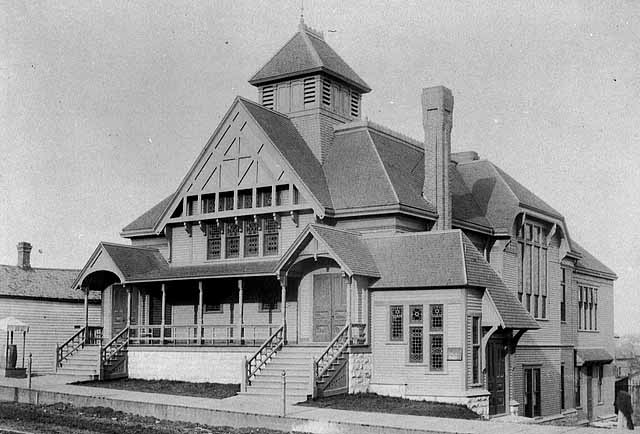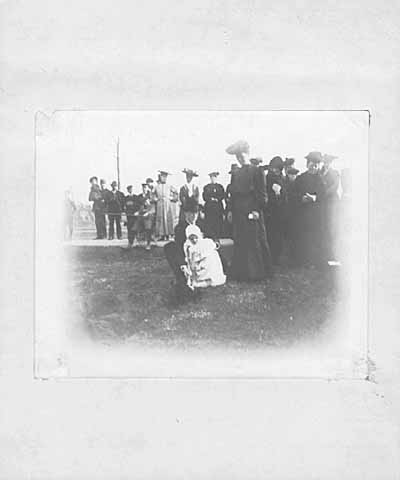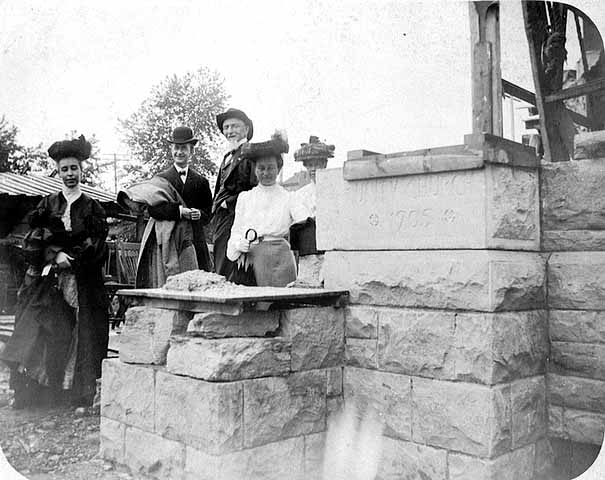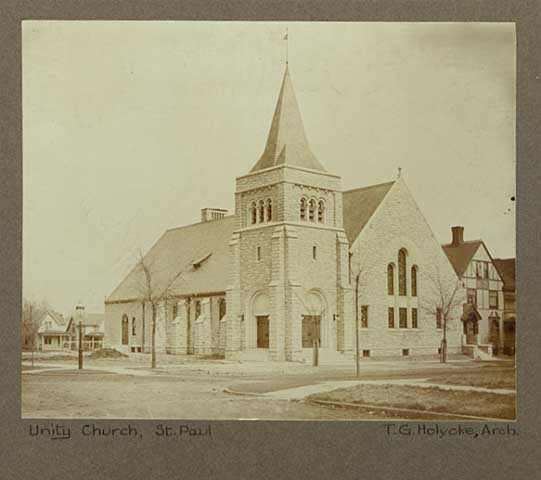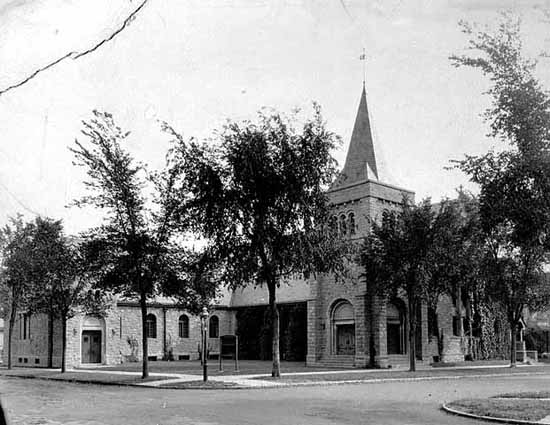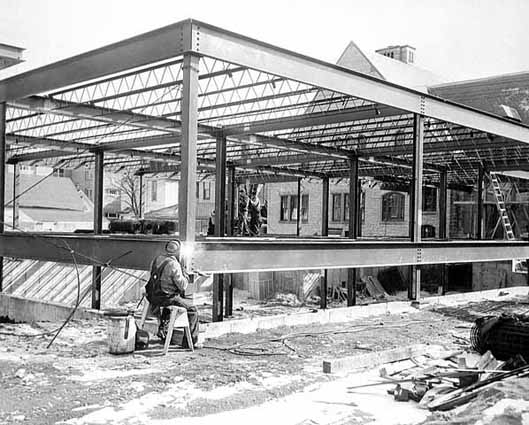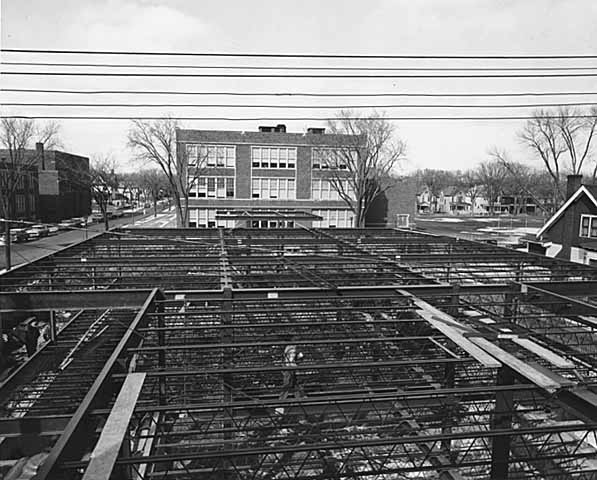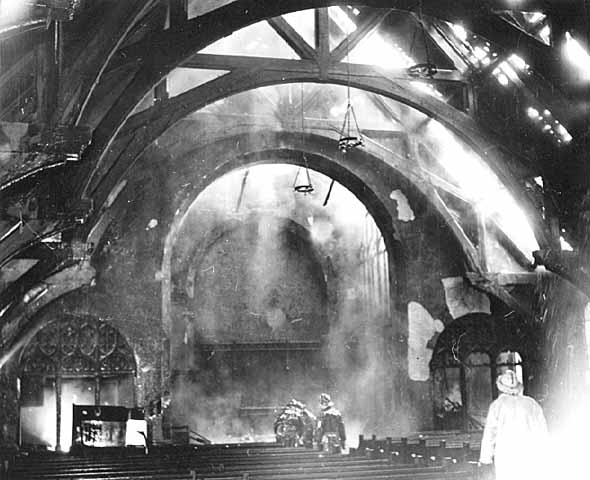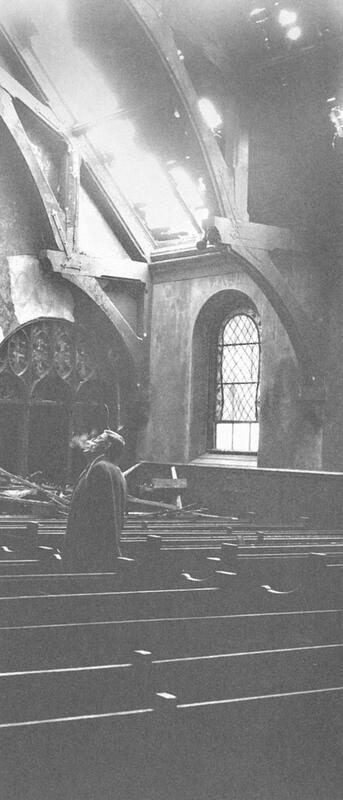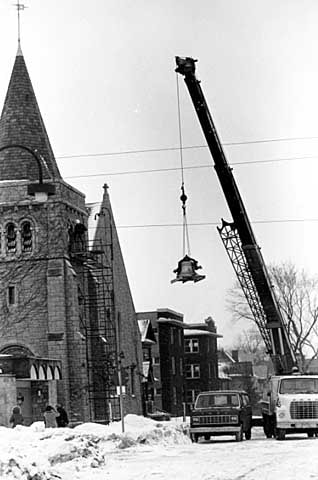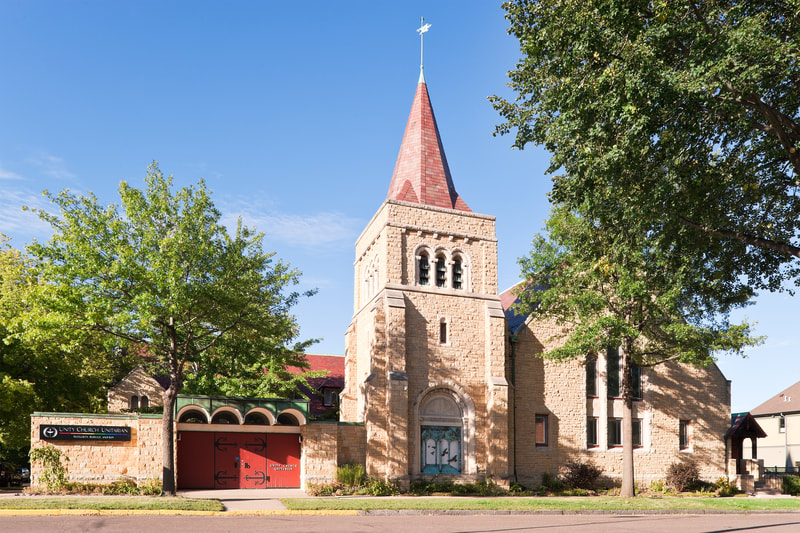Unity Church History
"You, the people, have been the real Unity Church, and are so still." -- Richard Wilson Boynton, Minister Unity Church, 1900-1907
The first record of Unitarianism in St. Paul bears the date of June 1852, when the Rev. George Woodward of Galena, Illinois, journeyed up the Mississippi River and held a service in the hall of the Sons of Temperance. There is no further mention of Unitarians until December, 1858, when Frederick R. Newell, formerly a Unitarian minister in Boston and now owner of a feed store in St. Paul, agreed to conduct services if he could use his old sermons. In 1859, lack of funds forced the group to disband. For the next several years, services were held only on the rare occasions when a minister was sent west by the Unitarian Association in an effort to keep fledgling groups going.
The year 1872 marks the first step in the successful organization of a Unitarian church in St. Paul. A subscription was taken to maintain a minister for one year. John R. Effinger came from Keokuk, Iowa, and preached his first sermon on February 11, l872. Two weeks later, on February 25, 1872, fifty members signed Articles of Association, and the next year saw the official incorporation of “Unity Church of St. Paul.” In 1875, the now fast-growing membership took a big step, moving into the vacant Universalist Church. They paid $1,000 yearly rent for the luxuries of a “pleasant church and softly cushioned pews.” Ill health forced Mr. Effinger, a highly respected minister, to resign in 1876, and Sunday services ceased.
William Channing Gannett, an ardent abolitionist and strong woman suffragist, arrived from Boston in 1877 on a three-month trial. By this time the congregation numbered about 150 and there were 70 children in the church school. In 1879, after two years as minister, Mr. Gannett requested to be ordained. On that occasion he read a “bond of fellowship,” an agreement that he had written. It was signed by 84 members of the congregation present and is still recited when new members join the congregation.
The Unitarians felt secure enough to dream of building their own church. They chose a site in downtown St. Paul and Mr. Gannett worked with the architect to design a “church home.” In January, 1882, they moved into the building, finishing things as money became available. The official opening service in the two-story Queen Anne cottage-style building was held on April 15, 1883. The following summer, Mr. Gannett resigned to do “some other things that have long been waiting” and because he thought it was time for Unity Church to have a new minister.
Mr. Gannett was replaced by Mr. Clay MacCauley, who served from 1884–1886. There were some in the church who were unhappy with his emphasis on a public ministry instead of ministering primarily to church members. Mr. MacCauley resigned to avoid causing division in the congregation. He later went on to head the Unitarian Mission in Japan.
In 1886, the trustees invited Mr. Samuel McChord Crothers from Brattleboro, Vermont, to be their minister, a post he held for over seven years. He was a noted and much-respected minister and well known as the author of gentle, humorous essays, often appearing in the Atlantic Monthly. Under Mr. Crothers the St. Paul Unitarians began taking a wider interest in their Minnesota Unitarian neighbors. The Minnesota Unitarian Conference was organized and held its first meetings in 1888 with delegates from St. Paul, Minneapolis, Duluth, Winona, St. Cloud, Luverne, Sioux Falls, South Dakota, and Alma, Wisconsin. In 1894, Mr. Crothers resigned to take up the ministry of First Parish Church in Cambridge, Massachusetts.
After several months of inviting ministers to preach, William Rogers Lord of Boston was installed in Feb. 1895. His ministry at Unity Church was short-lived and perhaps a bad fit. In his letter of resignation, dated Oct. 3, 1897, Mr. Lord writes that “St. Paul has but one liberal church, and that church should be strong. … It is clear to me that I am not the man to bring about these results.” Lord is best known for his interest in ornithology, sparked during his ministry at First Unitarian church in Portland, Oregon, from 1899–1901. He became a well-known author and lecturer on the birds of the Northwest. A year later, in October, 1898, Clarence Leslie Diven of Connecticut was invited to take the pulpit. There were high hopes for the ministry of this highly educated man, but he became ill in late 1899 and died in January, 1900.
The year 1872 marks the first step in the successful organization of a Unitarian church in St. Paul. A subscription was taken to maintain a minister for one year. John R. Effinger came from Keokuk, Iowa, and preached his first sermon on February 11, l872. Two weeks later, on February 25, 1872, fifty members signed Articles of Association, and the next year saw the official incorporation of “Unity Church of St. Paul.” In 1875, the now fast-growing membership took a big step, moving into the vacant Universalist Church. They paid $1,000 yearly rent for the luxuries of a “pleasant church and softly cushioned pews.” Ill health forced Mr. Effinger, a highly respected minister, to resign in 1876, and Sunday services ceased.
William Channing Gannett, an ardent abolitionist and strong woman suffragist, arrived from Boston in 1877 on a three-month trial. By this time the congregation numbered about 150 and there were 70 children in the church school. In 1879, after two years as minister, Mr. Gannett requested to be ordained. On that occasion he read a “bond of fellowship,” an agreement that he had written. It was signed by 84 members of the congregation present and is still recited when new members join the congregation.
The Unitarians felt secure enough to dream of building their own church. They chose a site in downtown St. Paul and Mr. Gannett worked with the architect to design a “church home.” In January, 1882, they moved into the building, finishing things as money became available. The official opening service in the two-story Queen Anne cottage-style building was held on April 15, 1883. The following summer, Mr. Gannett resigned to do “some other things that have long been waiting” and because he thought it was time for Unity Church to have a new minister.
Mr. Gannett was replaced by Mr. Clay MacCauley, who served from 1884–1886. There were some in the church who were unhappy with his emphasis on a public ministry instead of ministering primarily to church members. Mr. MacCauley resigned to avoid causing division in the congregation. He later went on to head the Unitarian Mission in Japan.
In 1886, the trustees invited Mr. Samuel McChord Crothers from Brattleboro, Vermont, to be their minister, a post he held for over seven years. He was a noted and much-respected minister and well known as the author of gentle, humorous essays, often appearing in the Atlantic Monthly. Under Mr. Crothers the St. Paul Unitarians began taking a wider interest in their Minnesota Unitarian neighbors. The Minnesota Unitarian Conference was organized and held its first meetings in 1888 with delegates from St. Paul, Minneapolis, Duluth, Winona, St. Cloud, Luverne, Sioux Falls, South Dakota, and Alma, Wisconsin. In 1894, Mr. Crothers resigned to take up the ministry of First Parish Church in Cambridge, Massachusetts.
After several months of inviting ministers to preach, William Rogers Lord of Boston was installed in Feb. 1895. His ministry at Unity Church was short-lived and perhaps a bad fit. In his letter of resignation, dated Oct. 3, 1897, Mr. Lord writes that “St. Paul has but one liberal church, and that church should be strong. … It is clear to me that I am not the man to bring about these results.” Lord is best known for his interest in ornithology, sparked during his ministry at First Unitarian church in Portland, Oregon, from 1899–1901. He became a well-known author and lecturer on the birds of the Northwest. A year later, in October, 1898, Clarence Leslie Diven of Connecticut was invited to take the pulpit. There were high hopes for the ministry of this highly educated man, but he became ill in late 1899 and died in January, 1900.
Richard Wilson Boynton came to St. Paul from Roslindale, Massachusetts, in the fall of 1900. In 1902, the congregation felt a church in a new location was advisable. Although the Queen Anne building was still adequate, the neighborhood was becoming more commercial. As a result, many of the downtown residents were moving “up on the hill” and their churches were following them. Unity Church, at its present site at Portland and Grotto, was dedicated on December 10, 1905. Because of health problems, Mr. Boynton resigned in 1907 to try a milder climate. He had some Unitarian pastorates and became a professor of philosophy at the University of Buffalo, New York.
Mr. Boynton’s successor was John Dumont Reid, who came from Greenfield, Massachusetts, and stayed until 1917. Mr. Reid came from the tradition of the “prophet-philosopher” and found the demands of parish administration not to his liking. The result was a severe falling-off of the membership in the church and the attendance in church school. Mr. Reid resigned in early 1917 and subsequently served almost entirely in interim positions.
Frederick May Eliot preached his first sermon in St. Paul in January, 1917, and made a strong impression on the congregation. Mr. Eliot came from Cambridge, Massachusetts, where he had worked with Mr. Crothers. In August, 1918, he was mobilized as a chaplain to a hospital unit in France during World War I, and served until April, 1919. The church grew steadily during his 20-year ministry, and the Parish Hall and the Ames Chapel were added to the building. Mr. Eliot left Unity Church in 1937 to become president of the American Unitarian Association in Boston.
Mr. Boynton’s successor was John Dumont Reid, who came from Greenfield, Massachusetts, and stayed until 1917. Mr. Reid came from the tradition of the “prophet-philosopher” and found the demands of parish administration not to his liking. The result was a severe falling-off of the membership in the church and the attendance in church school. Mr. Reid resigned in early 1917 and subsequently served almost entirely in interim positions.
Frederick May Eliot preached his first sermon in St. Paul in January, 1917, and made a strong impression on the congregation. Mr. Eliot came from Cambridge, Massachusetts, where he had worked with Mr. Crothers. In August, 1918, he was mobilized as a chaplain to a hospital unit in France during World War I, and served until April, 1919. The church grew steadily during his 20-year ministry, and the Parish Hall and the Ames Chapel were added to the building. Mr. Eliot left Unity Church in 1937 to become president of the American Unitarian Association in Boston.
